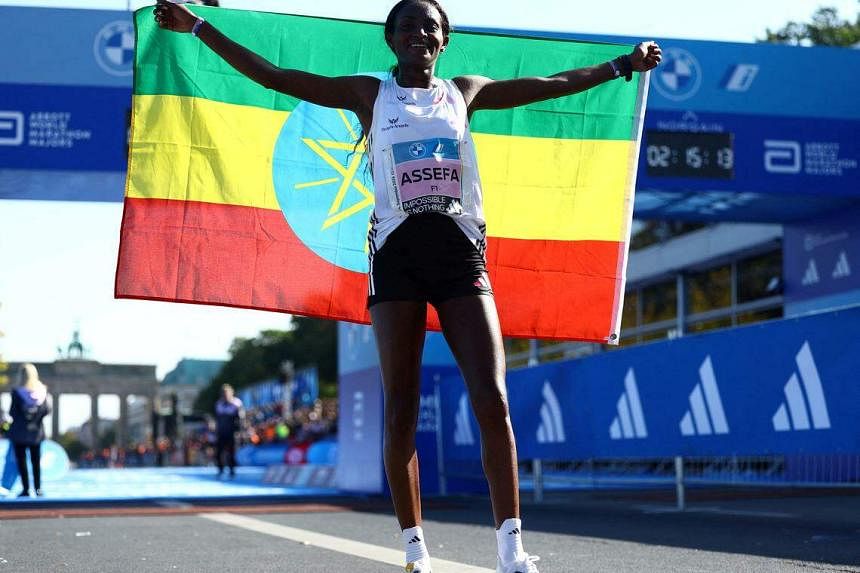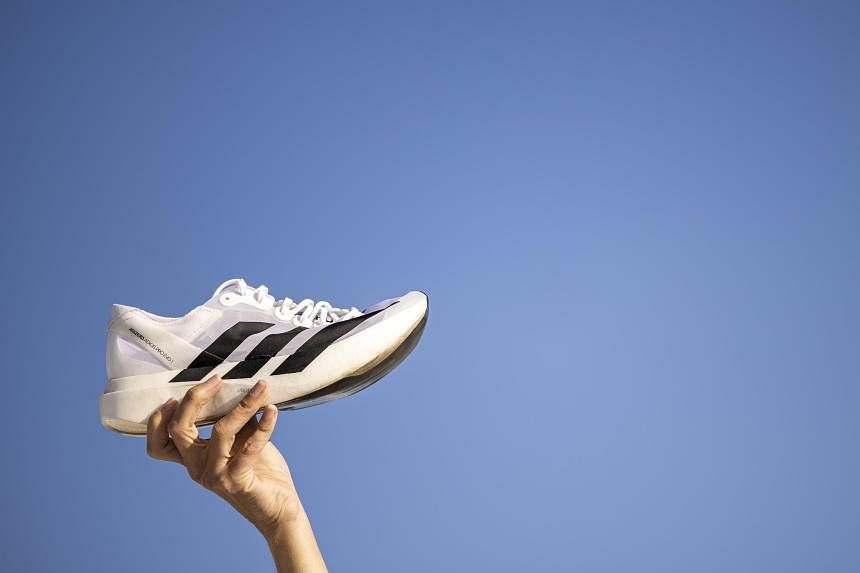NEW YORK – When Ashley Mateo went through a recent track workout, something felt different. She hit her intervals faster, her heart rate was lower, and her feet felt lighter. When she ran her next marathon, she did a personal best.
Mateo, a journalist and 15-time marathoner who reviews running shoes, believes her performance may have improved thanks to the Adizero Adios Pro Evo 1 by Adidas, a new race shoe with an eye-popping U$500 (S$675) price tag.
There is another catch: The Evo 1 lasts long enough for just one marathon, plus an unspecified “familiarisation period.”
Despite her positive experience, Mateo is not sure the shoes are worth the cost, which she did not have to pay for as a reviewer.
The shoes are the lightest ever produced by Adidas and the latest entry in a heated competition to make the best carbon-fibre racing shoes. Only 521 pairs have been released to the public, targeted at runners who can run a marathon within 3 hours 30 minutes.
Some who have raced in them say they can immediately feel a difference. Ethiopia’s Tigst Assefa ran the fastest marathon ever by a woman in a pair, shattering the record by more than two minutes at September’s Berlin Marathon.
Yet the shoes’ short shelf life has raised concerns and made some in the running community question whether the hype is deserved. Aside from their lightness, the shoes’ other technology – a new foam and new structure – is unlikely to provide a big edge, if any, experts say.

At US$500 per marathon and tryout run, they are among the least sustainable shoes out there. Adidas intends to keep this price, which “reflects the high-performance materials and designs within the product”.
“We have marketing claims and a pair of promises about improvements,” said Ross Tucker, an exercise physiologist who runs The Science of Sport, a popular blog for runners. “We have a world record in the marathon. But we don’t actually have any evidence, not compared to its peers and certainly not compared to its predecessors.”
Nike has long dominated the marathon racing shoe market with its Vaporfly line. A carbon-fibre plate in the midsole stores and releases energy with every stride. That, combined with a midsole foam called Pebax, catapults long-distance runners forward, improving times around 4 per cent compared with average shoes.
Soon after its release in 2017 with its own hefty US$250 sticker price, Vaporflys helped elite runners smash records. Other shoe companies followed suit, with New Balance, Saucony and Hoka among the brands to release carbon-plated shoes.
Adidas’ new shoe features three key developments. At 138g in a men’s Size 9, it is about 25 per cent lighter than the latest Vaporfly. The company says the new foam boosts energy capture, and a change to the shoe’s design curves the sole up near the toes.
It is well established in sports science that the lighter the shoe, the faster the runner. The weight difference between an Evo 1 and a Vaporfly might shave around 20 seconds off a marathoner’s time, said Geoff Burns, a physiologist at the University of Michigan who studies running biomechanics.
Changes in the foam and rocker are unlikely to be significant, adding at most “fractions of a per cent in efficiency”, he said.
The Evo 1, Burns said, is not much of a departure from the Vaporfly. “It’s the exact same recipe, with different spices added to the foam,” he said.
Racing shoes like the Vaporfly typically last at least four marathons, and Tucker and Burns expressed concerns that if the Evo 1 was good for only one marathon, it would show signs of degradation during the race itself.
“If you’re not a lightweight, pretty fast runner, who doesn’t absolutely destroy shoes, you’ll probably struggle to get even that out of it,” Tucker said.
Mateo said that the rocker style of the shoe was her favourite part, and that the shoe “didn’t feel like it was at the end of its life” after the race. But she added that the cost was a non-starter, and that feel was a matter of personal preference and biomechanics.
“They feel fast, but every runner responds differently to different shoes,” she said. NYTIMES

